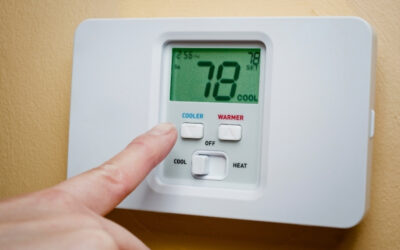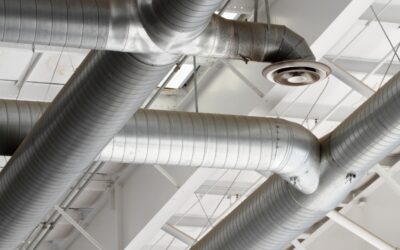In many locales today, adequate home ventilation in a new house is required by local codes. Because new construction is airtight and energy-efficient, mechanical ventilation precisely sized to the square footage of the home is stipulated by law. Not too long ago, however, ventilation was left to uncontrolled air exchange with the outdoors through cracks and gaps that exemplified the energy-inefficient construction of the past. Today, proper home ventilation is recognized as both a comfort and health issue on equal footing with adequate heating and cooling.
Back when controlled ventilation wasn’t a high priority in residential construction, the consequences included poor indoor air quality and high operating costs. Pollutants from outdoors infiltrated the house through structural openings while conditioned heated and cooled air leaked out. Moreover, pollutants originating from sources inside the house also accumulated to concentrated levels sufficient to cause health symptoms in susceptible occupants.
Most of those homes are still standing today and many of their occupants still experience the downsides of inadequate home ventilation. Today’s homeowners have several alternatives to add mechanical ventilation technology to existing homes.
Exhaust Fans
To remove stale or humidified air, the common exhaust fan works well in spot applications such as a bathroom or kitchen. Normally mounted in the ceiling and connected to a dedicated duct that terminates at the roof or at a vent in an exterior wall, exhaust fans are inexpensive solutions to small-scale ventilation issues in limited spaces.
This simple, low-cost method has several shortcomings, however. Because exhaust fans don’t replace exhausted air with an equivalent volume of fresh air, they pose a potential to depressurize the house. When the air balance in the house tips toward the negative, outdoor air is sucked in through openings such as worn weatherstripping or structural cracks. Some of that infiltrating air also originates in potentially contaminated areas like the crawl space, attic or an attached garage. In addition, in cold climates the influx of outdoor air into a depressurized home can reduce the effectiveness and energy efficiency of your heating system.
CFIS Systems
Short for central fan integrated supply, these systems take a supply-only approach to home ventilation. A CFIS system utilizes the blower already incorporated in your central heating and cooling system and the existing ducts to distribute fresh air inducted through a central vent. The CFIS system connects to your return ductwork and blends fresh air with conditioned air in a blend designed to avoid disrupting indoor temperatures. If ventilation is required when the heating and cooling system is cycled off, the CFIS controller can signal the blower to operate independently and bring in outdoor air without the furnace or air conditioner.
Because CFIS ventilation is a supply-only system with no provision to exhaust equal volumes of indoor air, pressure inside the house may be increased. When the house is overpressurized, heated or cooled air is forced out through gaps and missing weatherstripping, increasing operating costs. In addition, humid indoor air may be pushed into wall voids, the attic or other enclosed zones where mold growth results from contact with moist air.
Heat Recovery Ventilation
A heat recovery ventilator (HRV) and its close cousin the energy recovery ventilator (ERV) deliver on both fronts of balanced ventilation and whole-house coverage. These systems utilize a network of small-diameter dedicated exhaust and intake ducts. A central controller unit incorporates separate blower fans for exhaust and intake functions and a heat exchanger between the incoming and outgoing airstreams.
The controller meters airflow to balance the volume of incoming air with the volume of exhaust air, preserving neutral indoor air pressure. Simultaneously, the heat exchanger transfers heat energy from the respective airflows to maintain indoor temperature levels and avoid burdening the furnace or air conditioner. In winter, heat is extracted from the exhaust airflow and added to cold incoming fresh air to pre-warm it. In summer, the system extracts heat from hot incoming air and adds it to stale air-conditioned air on its way out.
An energy recovery ventilator performs all the functions of a HRV but also transfers humidity. When humid outdoor air is inducted in summer, the system extracts the humidity from the incoming airstream and adds it to outgoing air, keeping indoor humidity levels low for optimum A/C function.
To learn more about available home ventilation options, in the Columbus area contact the professionals at Indoor Solutions, Inc.
Image Provided by Shutterstock.com




